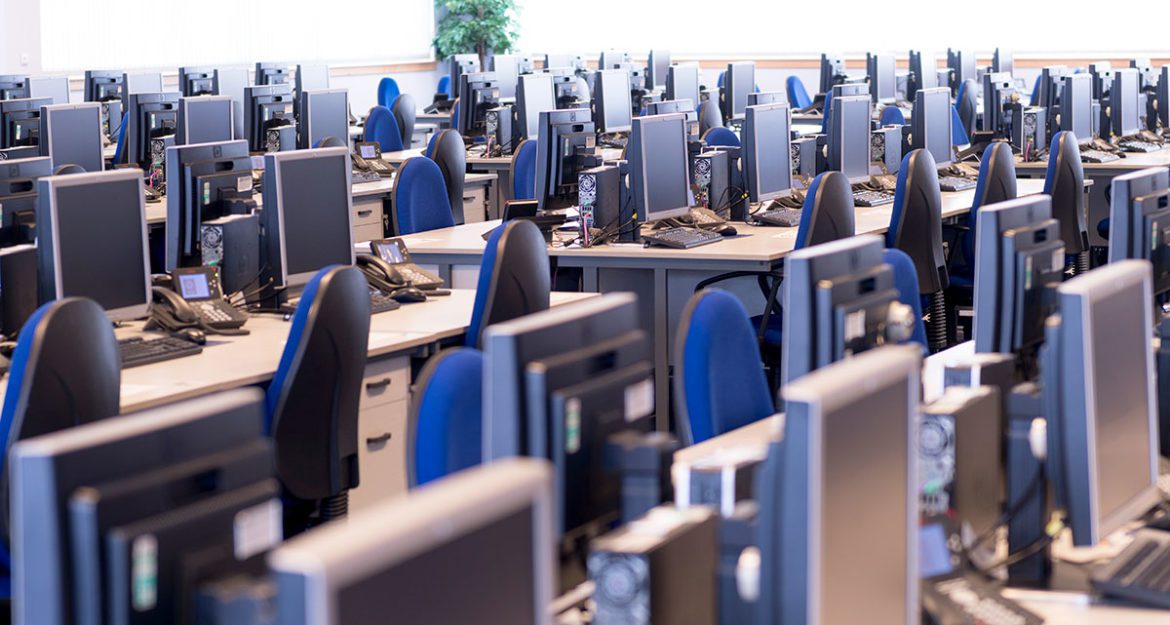
Rob Branch, one of Daisy’s regional business continuity centre managers, talks about managing a business continuity centre during the coronavirus outbreak.
The current COVID-19 situation we are living through is something nobody could have predicted. Daisy Availability Services has been able to react quickly to ensure we can effectively respond to our customer’s requirements while still adhering to government guidance.
Within Availability Services, it’s no surprise that we understand how important Business Continuity planning is. Availability Services has developed and tested our own business continuity plans over many years. Therefore, we have the processes, technology and procedures to allow our teams to not only work remotely but also monitor and manage our infrastructure and buildings remotely. As we are a 24/7 business, we use monitoring technology to ensure our buildings and infrastructure are available whenever a customer needs to invoke our services, day or night. Our network operations centres monitor all of our Business Continuity centres remotely. Many of the issues the monitoring flags up can then be resolved remotely. For any problems that can’t, our recovery centre teams are spread throughout the UK and are available to travel to the recovery centre to resolve in person.
The current government guidance dictates that we must only travel to work if necessary. With that in mind, Daisy has postponed all non-essential visits to our recovery centres and is focused on supporting non-pandemic related invocations and access for customers with dedicated areas within our facilities. This decision has allowed us to follow the government’s guidance and has enabled most of our recovery centre staff to work from home for the majority of the time.
Remote capabilities
Our recovery centres have all the tools required for staff who usually manage the centre onsite, to work from home and still be able to respond to invocations as and when required. Because our recovery centre engineers all live under an hour away from their nearest recovery centre, they can quickly respond when needed, to ensure we can meet customer service level agreements when customers need access. We have the tools to deploy customer desktop images and configure network connections remotely, so we are able to start deployments before leaving home, and they complete while the engineer is travelling to the centre. The VOIP telephony system for every work area recovery position is also able to be managed remotely, being centrally managed by our telephony team. Remote monitoring and alerting is in place which allows any issues to be investigated quickly and effectively. Upon invocation, our telephony engineers can make any changes required quickly to enable our customers to begin taking calls.
Keeping everything in check
Our recovery centre teams carry out daily, weekly and monthly checks to ensure our buildings and technology are “ready to go” whenever they are needed. Many of the technology checks can be carried out remotely such as PC checks, network checks and so on. However, we also have a legal requirement to carry out building checks that require a recovery engineer site visit. This includes tending to various facilities-based functions such as water flushing, emergency light checks, fire alarm checks along with checking for building damage. A member of the recovery centre team visits each recovery centre every week to carry out these required checks, while the centres are unmanned.
There will be occasions when customers do need to visit our centres, for example for data centre access and dedicated work area recovery suite access. Before anyone is permitted access to a centre, they are asked a series of questions to try to determine their exposure to COVID-19 and the likelihood they may be infected. If we believe there is a risk that a visitor is carrying the infection, we will ask them to re-arrange their visit. While visitors are onsite, social distancing rules are observed, and hand sanitiser is provided in all common areas. These measures are in place to minimise the risk to our teams.
The personal touch
As well as ensuring our teams have the physical technology required to work from home, we are also looking after their wellbeing during this difficult time, so they do not feel isolated from colleagues and the company. Our recovery centre staff use Microsoft Teams to hold daily calls to keep in touch with each other and with wider Daisy teams, along with weekly calls where updates are provided from the management team. The chat features mean our teams can keep in touch with our colleagues throughout the day. In addition, Daisy sends regular communications to all staff covering business and staff updates, including health and well-being support available, and extended training available on our Daisy University platform for staff to carry out extra learning while at home, improving or learning new skills, and keeping our minds active.
What does it all mean?
The result of all the preparation and internal support for staff means that we can remain focused on supporting our customers. It means that all of our services remain in place, and while some of our business continuity centres may be unmanned, they are still ready and waiting to open if our customers need us.
About Rob
 Rob has been with Daisy, supporting our business continuity customers for the last ten years, as a recovery engineer, business continuity specialist and now in the role of a regional Business Continuity Centre Manager. Customers at our Manchester and Wakefield centres will know Rob very well!
Rob has been with Daisy, supporting our business continuity customers for the last ten years, as a recovery engineer, business continuity specialist and now in the role of a regional Business Continuity Centre Manager. Customers at our Manchester and Wakefield centres will know Rob very well!
Rob’s primary role is supporting customers as they perform disaster recovery rehearsals and experience invocations, ensuring they can recover their IT systems in a timely manner. This involves co-ordinating rehearsals and invocations, as well as advising customers where improvements can be made to their business continuity plans, and providing technical support for Wintel, VMware, Hyper-V, networking, HP server/desktop hardware and Dell/HP SANs.